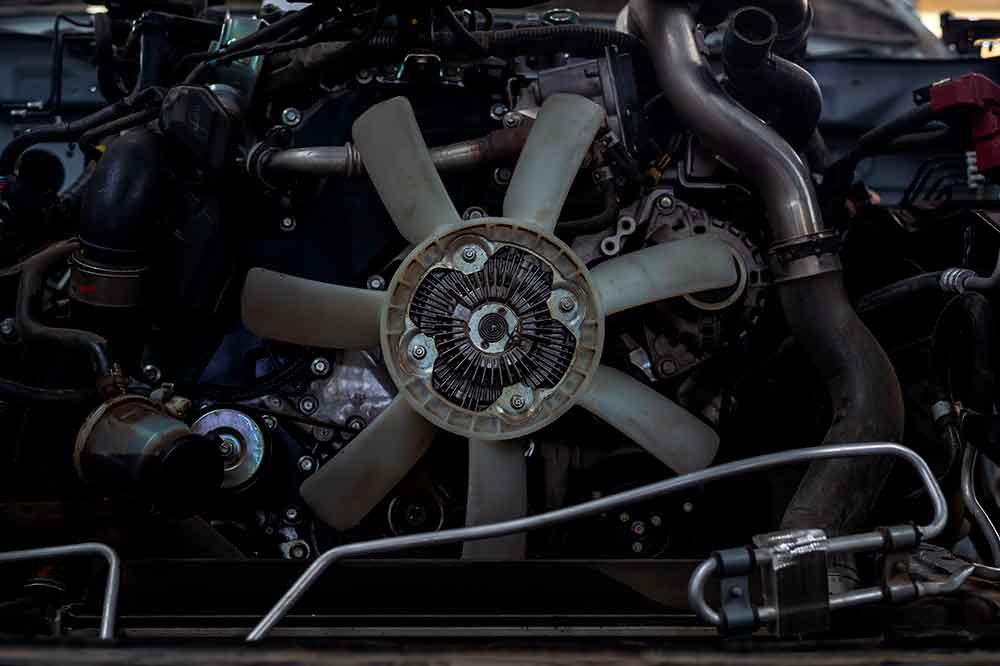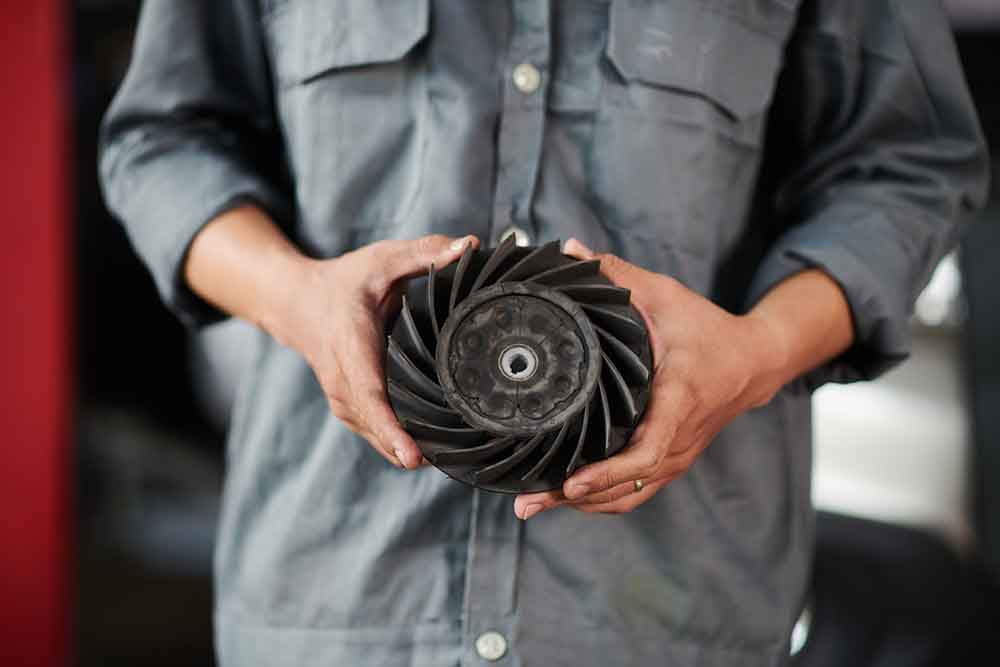Diagnosis, Prevention, and Practical Solutions to Increase Fan Lifespan
The radiator fan is one of the most vital components of a vehicle’s cooling system, responsible for helping maintain the engine’s optimal temperature. Despite its simple appearance, failure of this part can lead to serious consequences for the engine—ranging from increased fuel consumption to overheating and possible damage to the cylinders. In many cases, fan failure occurs due to specific technical reasons that, if not properly identified and addressed, may cause recurring issues.
In this article from Karengo, we examine the most common causes of radiator fan and fan motor failure and provide explanations and solutions for each case. So if your vehicle’s fan or fan motor has been a concern for you, stay with us until the end of this article.
1. Natural Wear and Tear
Like many mechanical parts, the fan and its motor have a defined service life. Over time, bearings, the armature, brushes, and internal parts of the motor wear out. As a result:
- Unusual noises such as whistling or knocking may be heard.
- The fan struggles to start or stops intermittently.
- The fan’s rotation speed drops and cooling efficiency decreases.
Solution: Regularly check the fan’s performance and replace it at recommended intervals, especially in high-mileage vehicles.
2. Short Circuit or Electrical Fluctuations
Irregular voltage, worn wiring, or improper electrical connections can send unsafe voltage to the fan motor. This can burn motor windings, melt connectors, or even cause minor electrical fires inside the motor.
Solution: Inspect the fan’s electrical circuit, verify the condition of the fuse, relay, connectors, and use OEM or heat- and fluctuation-resistant components.
3. Stuck or Broken Fan Blades
Impact, debris, or foreign objects trapped between the blades can cause the fan to jam or break. In this situation, the motor attempts to rotate the fan but faces resistance, which may result in motor burnout or rapid wear.
Solution: Install fan guards, regularly check the blades, and keep the engine compartment clean from dirt, leaves, and debris.
4. Faulty Relay or Temperature Sensor
The fan motor requires a signal from the ECU to turn on; this command is transmitted via the relay and temperature sensor. If either component malfunctions, the fan may not turn on or may activate at the wrong time.
Solution: Test the coolant temperature sensor and fan relay using diagnostic tools or manual testing, and ensure proper response to temperature changes.
5. High Temperature and Poor Airflow
Driving in severe conditions—heavy traffic, long uphill slopes, tropical climates, or running the car without A/C in hot weather—puts heavy load on the fan. In such cases, the fan motor has to operate continuously and at high speed.
Solution: Use fans with proper capacity (OEM), keep the cooling system clean, and avoid prolonged idling in high temperatures.
6. Incorrect or Insufficient Coolant
If the coolant (antifreeze/radiator fluid) level or quality is low, engine temperature rises rapidly, forcing the fan to run constantly to compensate. This results in fast fan motor wear.
Solution: Use standard coolant, check the expansion tank level, and replace the coolant every 2 years or according to the vehicle manual.
7. Improper Installation or Use of Non-standard Parts
One of the most common mistakes in repair shops is using low-quality, unbranded, or non-original fans. These parts usually have poor durability and short lifespan. Incorrect installation can also lead to imbalance, vibration, or early motor failure.
Solution: Always use original or manufacturer-approved parts and ensure installation is performed by experienced technicians.
Conclusion
The fan motor is one of the most important components in maintaining engine performance and health. Its failure is not merely about replacing a part—it’s essential to identify the root cause. By understanding the technical reasons behind fan failure, preventive measures can be taken, reducing repeated costs and avoiding major engine damage.
Prevention is better than replacement.
Regular inspection and using high-quality parts are the keys to a long-lasting and reliable radiator fan.




Leave a Reply